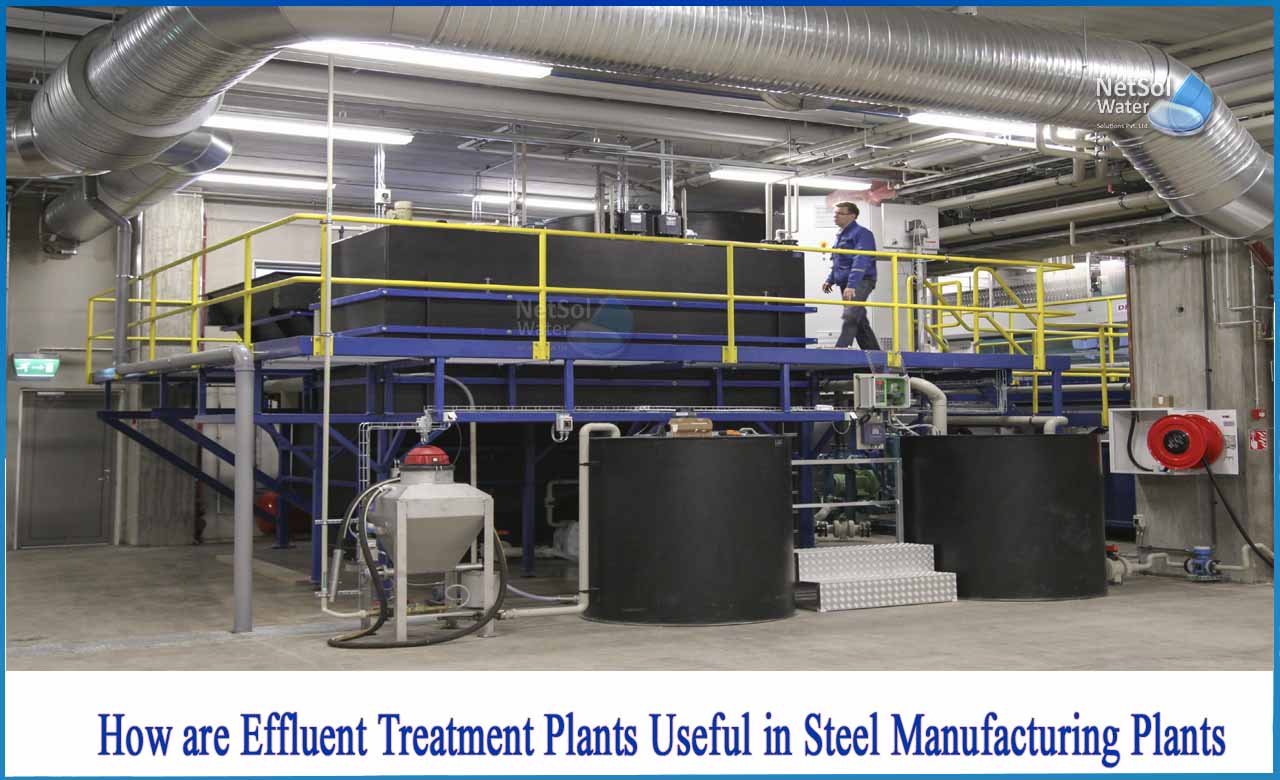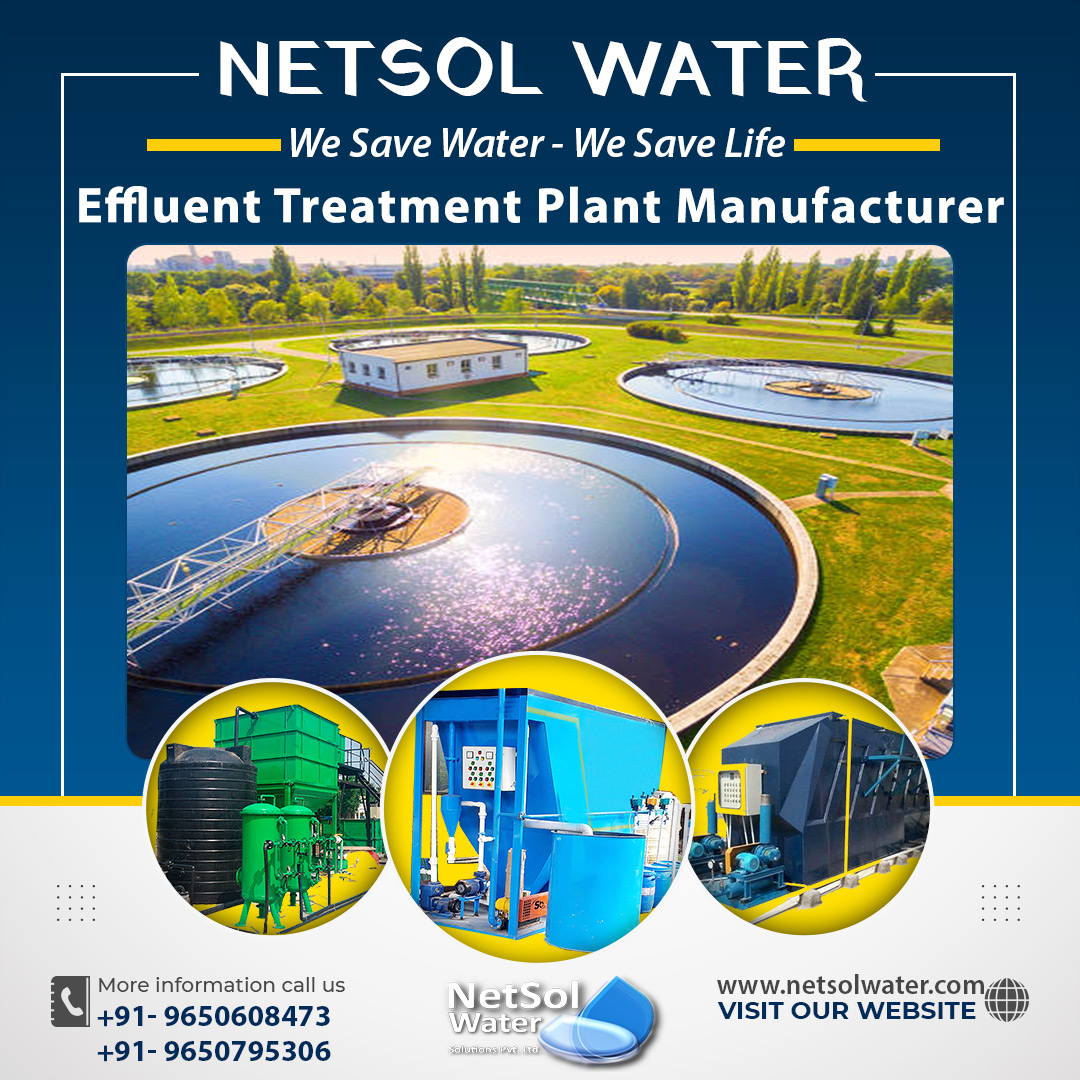How are ETP useful in steel manufacturing plants?
Steelworks use large amounts of water for various purposes such as cooling, dust control, cleaning, tempering (heat treatment), and transportation of waste (scales such as ash and sludge).
Water is an integral part of several processes, including moisture content of coal, palletisation of slag mix, production of pellets in the production of iron ore pellets, production of steam, and thus electricity production, granulation of blast furnace slag, etc. It also produces the use of large amounts of water. It may contain large amounts of wastewater, suspended solids and many solutes. The quality of wastewater depends on the process and purpose of using the water.
The main environmental impacts of untreated wastewater from steelworks when discharged into water bodies are
(i) Toxicity to aquatic organisms,
(ii) Reduction of dissolved oxygen,
(iii) Silted solids,
(iv) Taste and smell problems,
(v) Temperature rise, effects on dissolved oxygen,
(vi) Effects on aquatic organisms,
(vii) Formation of oil spills due to floating oil, etc.
Large amounts of process water in direct contact with raw materials, products and exhaust fumes must be treated to legally required values ??prior to release for water reuse, water recycling or the removal of pollutants by authorities.
Wastewater Treatment
The main processes of an integrated steel mill that require wastewater treatment include coking, steelmaking, hot and cold rolling, and other coating processes such as pickling, electrolytic tinning and other coating processes.
Usually, the most important parameters regulated by statutory authorities are suspended solids, fats and oils, phenols, cyanides, ammonia, and heavy metals such as lead, zinc, chromium and nickel. In addition, there are various organic compounds used in regulated coke making and cold rolling operations.
Suspended solids management
Removal of suspended solids from wastewater is required in virtually every production hall of a steel mill from a cooking plant to a finishing plant. Solid particles are in the process stream during smoke and exhaust cleaning and cooling, slag granulation, de-scaling, roller and product cooling, channel flushing in rolling mills, and product flushing in equipment.
i) Sedimentation, (ii) centrifugation and (iii) filtration.
Sedimentation, also known as purification, consists of gravitational sedimentation. This process is typically performed with either a clarifier or tilted plate separator specifically designed for each application.
Heavy Metal Control
Regulators typically limit the emission of heavy metal from blast furnace plants, smelter process water, and pickling, cold rolling, electroplating, and hot coating plants. The usual method for removing these trace metals is chemical precipitation followed by clarification or filtration.
Chemical precipitation as a mechanism for removing metals from wastewater is generally a complex process consisting of two steps:
1) Precipitation of unwanted metals and 2) removal of precipitates.
After the precipitation is complete, a small amount of metal usually remains dissolved in the wastewater. The amount of residual metal dissolved depends on the chemicals used, the solubility of the metal, and the effects of coprecipitation.
The effectiveness of this method of removing specific metals depends on the proportion of specific metals in the wastewater (and therefore the precipitate) and the effectiveness of the removal of suspended solids.
Biological Treatment
Biological Oxidation is a commonly used technique for treating coking effluents and by-products. This wastewater contains significant amounts of phenol, cyanide, thiocyanate, and ammonia, as well as low concentrations of other organic compounds, primarily due to condensation from raw coke, oven gas containing these substances. Biological treatment is the traditional method of treating wastewater from coke ovens and by-product plants prior to disposal.
Netsol Water is a manufacturer of STP’s, ETP’s in India. We believe in treating waste water properly before disposing it off in the environment.




